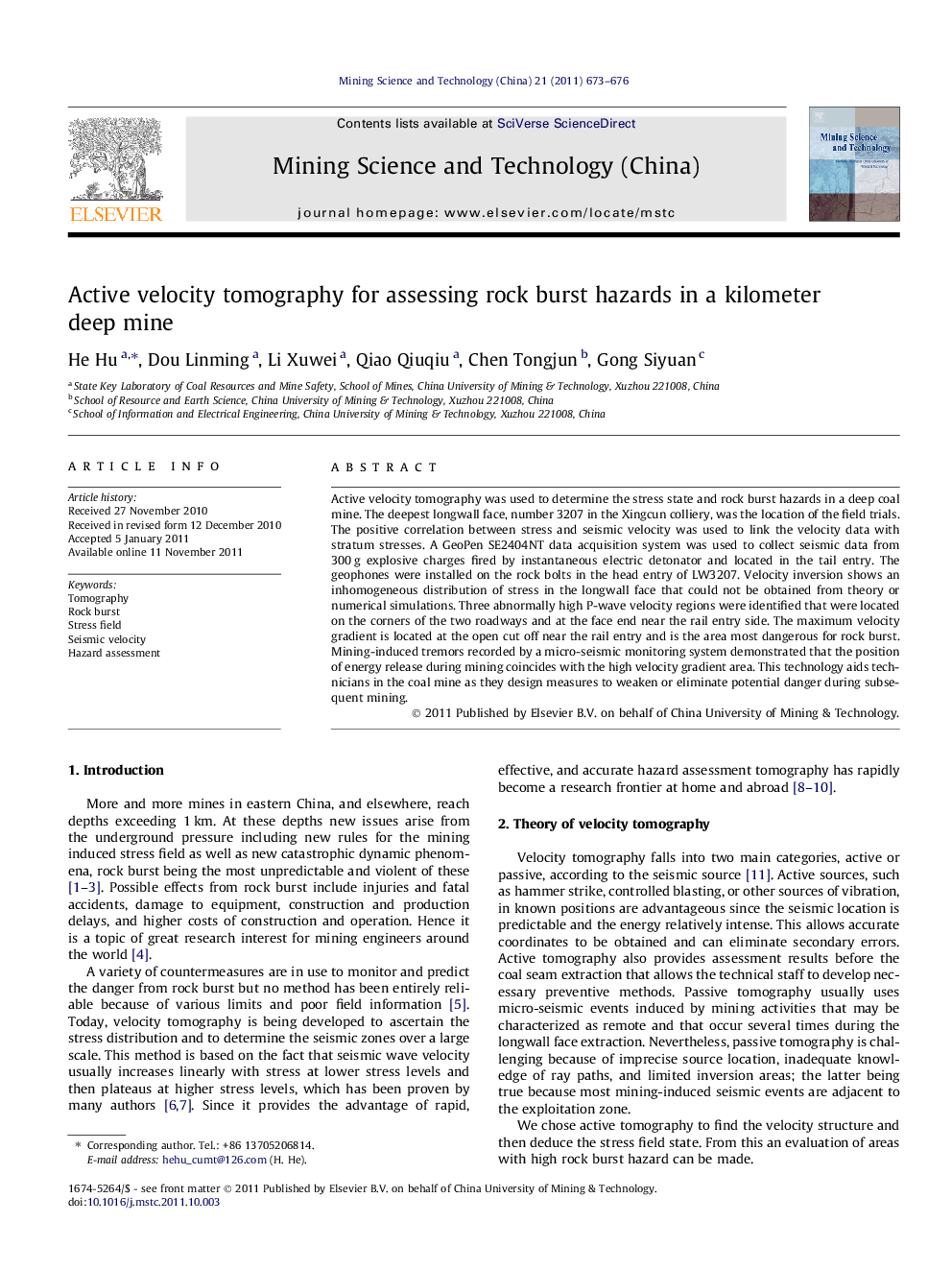| Article ID | Journal | Published Year | Pages | File Type |
|---|---|---|---|---|
| 294512 | Mining Science and Technology (China) | 2011 | 4 Pages |
Active velocity tomography was used to determine the stress state and rock burst hazards in a deep coal mine. The deepest longwall face, number 3207 in the Xingcun colliery, was the location of the field trials. The positive correlation between stress and seismic velocity was used to link the velocity data with stratum stresses. A GeoPen SE2404NT data acquisition system was used to collect seismic data from 300 g explosive charges fired by instantaneous electric detonator and located in the tail entry. The geophones were installed on the rock bolts in the head entry of LW3207. Velocity inversion shows an inhomogeneous distribution of stress in the longwall face that could not be obtained from theory or numerical simulations. Three abnormally high P-wave velocity regions were identified that were located on the corners of the two roadways and at the face end near the rail entry side. The maximum velocity gradient is located at the open cut off near the rail entry and is the area most dangerous for rock burst. Mining-induced tremors recorded by a micro-seismic monitoring system demonstrated that the position of energy release during mining coincides with the high velocity gradient area. This technology aids technicians in the coal mine as they design measures to weaken or eliminate potential danger during subsequent mining.
